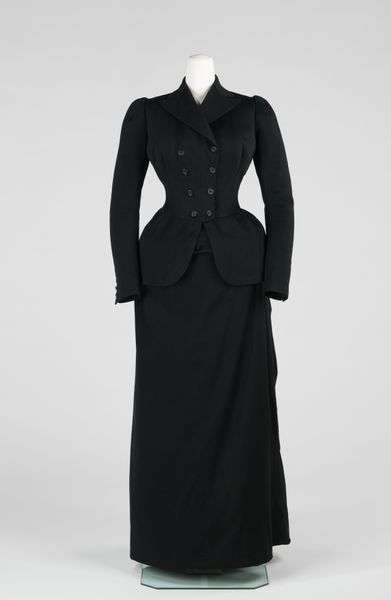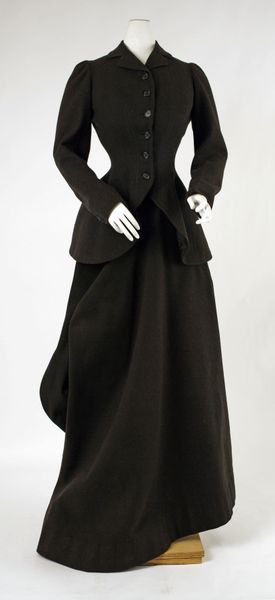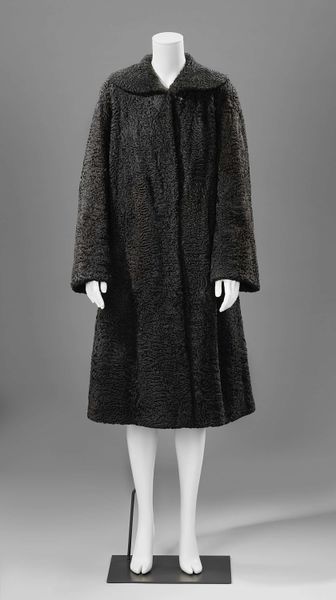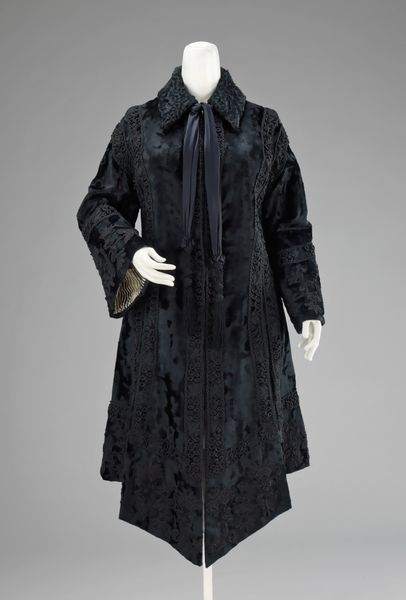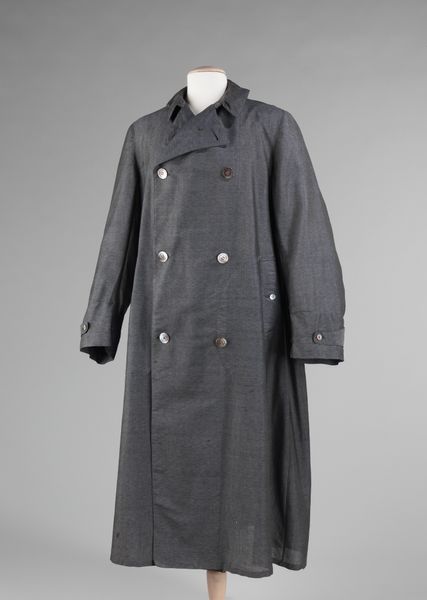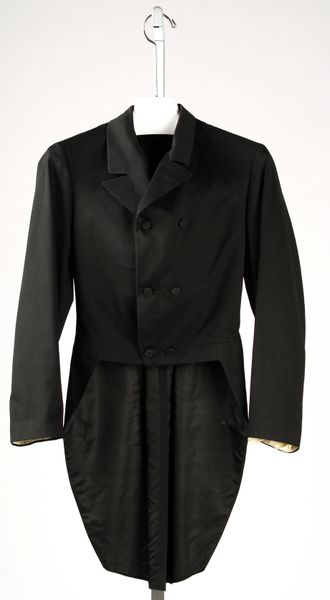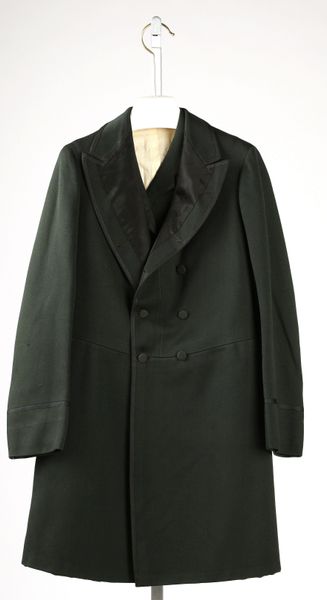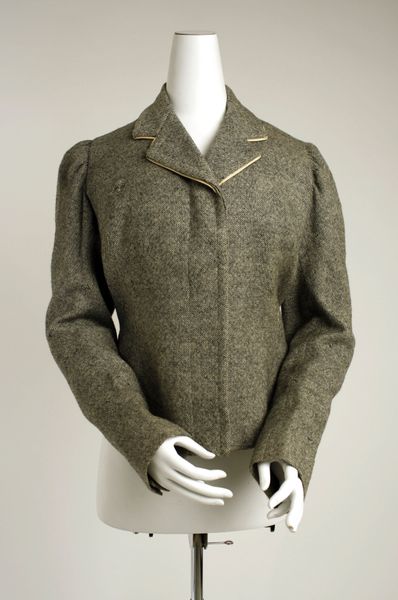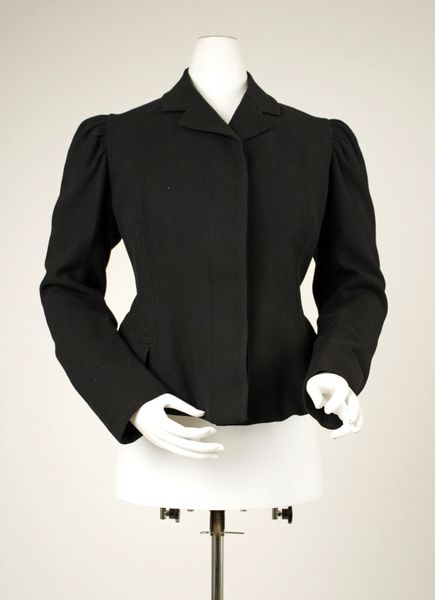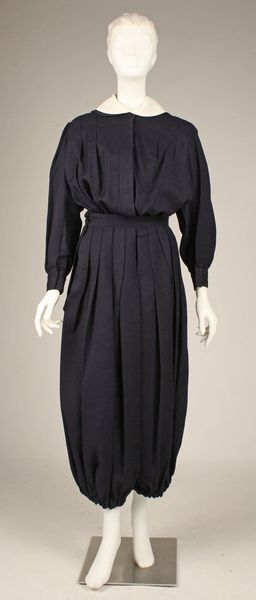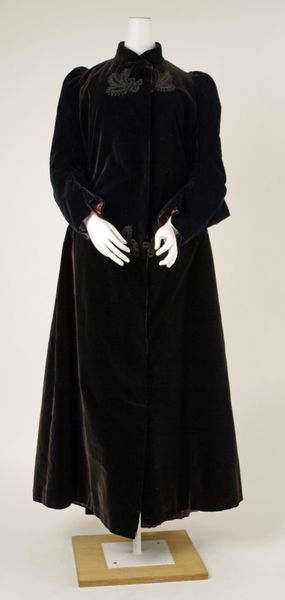
Copyright: Public Domain
Curator: Welcome. Before us, we have an Evening Coat, a stunning example of late 19th-century fashion design, likely crafted between 1890 and 1898 by the House of Worth. It's currently residing at the Metropolitan Museum of Art. Editor: Ooh, dramatically elegant, like a fashionable shadow! That velvety black paired with what seems like silk gives it a very distinctive contrast. It's the sort of piece that hints at a secret life. Curator: Indeed! The piece makes abundant use of contrasting textures to signify a shifting cultural understanding of appearance and propriety, which is especially visible when we consider its stark visual symbolism of dark fabrics as signals for sophistication. We can note the careful pairing of opulent fabrics and ornate decorations. This particular design invokes that cultural expectation quite successfully, but what effect might this have had for its wearer? Editor: Well, to me it reads almost like armor—chic armor, mind you. It’s structured, with those bold, puffed sleeves, suggesting power, almost like a gentle intimidation. Victorian wear was like a visual chess match with a lot on the line. Imagine trying to look graceful while carrying that much fabric around... Curator: Fascinating! These elements may signify a more powerful presence in public settings and perhaps underscore themes connected with how visibility has affected women throughout history. These pieces provided ways to subtly signal position through visual motifs in society—but were they always signals of empowerment or control? Editor: Right! I get a kind of fairy tale villain vibe here. "Who's the fairest of them all?" You get the feeling wearing this meant wielding considerable social clout, turning heads, maybe even sparking jealousy... I think fashion history often masks the wear and tear of that constant performance. It makes me think how different an existence must have felt just wearing the garb. Curator: A great point. We could explore how the "language" of this design contributes, perhaps influencing individual identity or experience at the crossroads of perception and historical setting, as its design and construction suggest how social meaning has consistently shaped one's lived experience during certain historical periods, specifically toward its influence upon expressions and understanding of both personal, and more generalized social agency. Editor: Thanks to clothing items such as this one that are now on exhibit, you almost want to make yourself stop and take stock of your style when examining historic articles that represent significant epochs from times passed; it makes me take another glance into my wardrobe as well! Curator: Exactly, and it's through such objects that cultural memories are shaped!
Comments
No comments
Be the first to comment and join the conversation on the ultimate creative platform.
